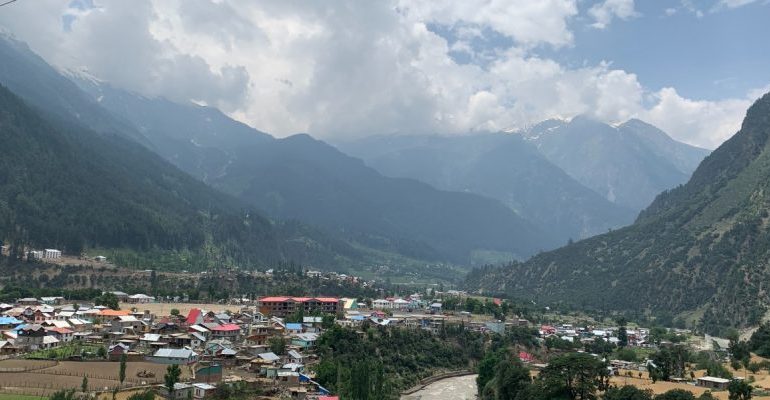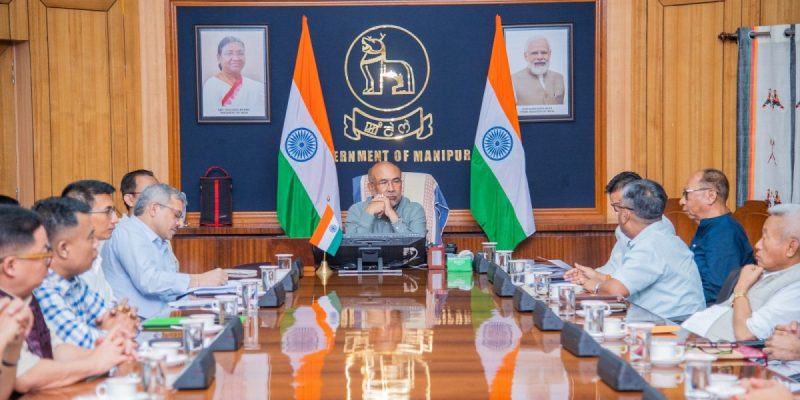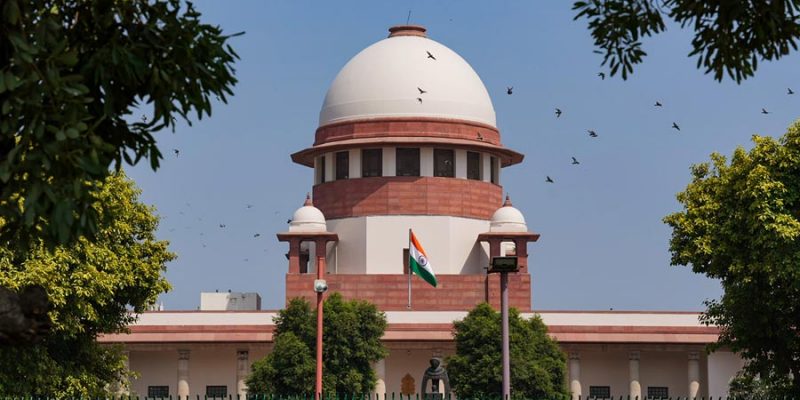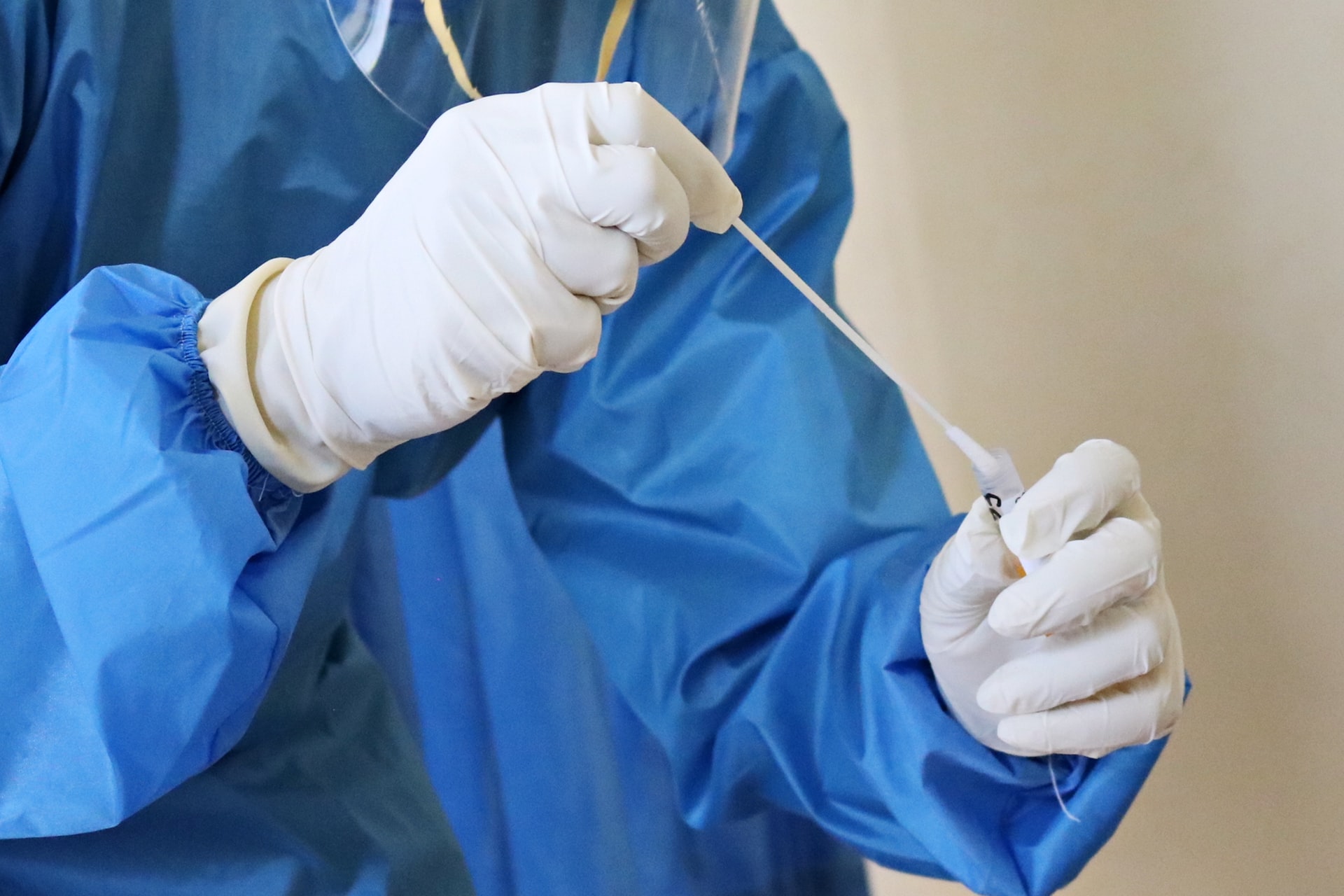J&K: Will the Renewed Hunt for Sapphires Aid the Development of Neglected Kishtwar?

Gulabgarh (Kishtwar): Mohammad Abbas recalls with excitement the days of yore when he would join the hunt in the mountains of Jammu and Kashmir’s Kishtwar district to search the world’s most precious sapphires.
Kishtwar’s sapphire mines are sepulchered in the inaccessible mountains towering at an altitude of nearly 16,000 feet, around Sumchan and Bilakoth areas of Padder Valley in Machail – which is one of the most remote regions of Jammu and Kashmir.

Mohammad Abbas, who worked in sapphire mines as a daily worker, posing for a photo at Kijaie village of Kishtwar. Photo: Jehangir Ali.
“Up there, the weather is harsh and very unpredictable,” Abbas, a farmer, said. “One moment the high altitude sun is peeling off your skin and the next you could get frostbite. Many labourers couldn’t stand those tough conditions and fled.”
Abbas (56) added with a smile: “But those who stayed earned their reward too.”
A vast stretch of mountains in Padder Valley nestled along Kishtwar district’s border with Ladakh is believed to house sapphire reserves worth Rs 10,000 crore, according to one estimate. A 19.88-carat Kishtwar sapphire broke all records in 2013 when it was sold for nearly Rs 20 crore.

The sapphire mines are located in the high-altitude mountains (seen snowcapped in the background) where weather conditions are very harsh. Photo: Jehangir Ali.
In India, the price of sapphire with a velvety texture and true-blue peacock colour, which is found only in Kishtwar, can reach Rs 5,00,000 per carat. The precious stone can change the socio-economic landscape of Kishtwar, which is one of the economically most underdeveloped and backward districts of Jammu and Kashmir.
Developmental needs of Kishtwar
The literacy rate in Kishtwar at 86.07% is higher as compared to Jammu and Kashmir which stands at 67.16%, according to Census 2011. The mountainous district has also emerged as a power hub of North India with nearly a dozen functional and upcoming hydropower projects with a cumulative capacity of 6000 MW clean power.
But Kishtwar faces acute deficiencies in providing basic civic amenities like road connectivity and healthcare. Industries are non-existent, and according to an official report, Kishtwar figures at the bottom among J&K districts in terms of improvements registered by the Commerce and Industry, and Environment sectors.
Kishtwar also lags at 17 out of 20 J&K districts in terms of human resource development, 15 in terms of public health sector, and 16 in terms of public infrastructure and utilities sector ranking, making it one of the most unliveable districts of Jammu and Kashmir, despite being abundant in natural resources.

A playground in Gulabgarh which also serves as a helipad for the ongoing Machail Yatra, a sacred Hindu pilgrimage held annually in Kishtwar. Photo: Jehangir Ali.
“Sapphires have been mined by both the government and locals of Kishtwar since 1885 when J&K was under the Dogra rule. But, it hasn’t translated into any developmental benefits for Kishtwar,” said Amar Singh, a Congress leader and ex-Sarpanch of Gulabgarh in Kishtwar.
Following the reading down of Article 370 in 2019, the Union government has shown “keen interest” in exploring the sapphire wealth of Kishtwar, according to an official who didn’t want to be named.
In 2021, the Geological Survey of India along with officials of the J&K administration completed the preliminary survey of sapphire mines in Padder Valley and a “comprehensive strategy” was formulated for “scientific exploration” of sapphires.
In June this year, a team of geologists from Mineral Exploration and Consultancy Limited (MECL) along with the officials of J&K’s Geology and Mining Department left Kishtwar for a two-month expedition to explore sapphire mines in the high mountains of Padder Valley.
Durgesh Devarshee, a MECL geologist, said that the team will set up a base in Padder Valley and carry out the G3 stage of exploration involving geochemical and geological prospecting of the sapphire mines.
“We are hopeful of taking the process to the G2 stage which will be followed by G1 stage when the estimate of sapphire in Kishtwar will be prepared and mining will hopefully commence,” Devarshee told The Wire in Gulabgarh town, from where the team departed for Padder Valley.
But the challenges thrown by nature in reaching the high-altitude mines, and the difficulties faced by the workers and engineers in adjusting to the tough living conditions there, have so far hampered the government’s plans to explore the mines on an industrial scale.
Mohammad Shafi, a resident of Kijaie village, said that the journey to the sapphire mines is a 40 km, two-day, back-breaking hike from Gulabgarh through difficult mountain passes which ends at Sumcham village of Machail in Padder Valley. Mules are used for ferrying essentials.

Mohammad Shafi has worked in the sapphire mines of Kishtwar for more than a decade but ailing health forced him to drop out. Photo: Jehangir Ali.
“There is no mobile phone connectivity. Two to three camps are set up along the route from Machail around Bilakoth, Dangail, and Kundail for night shelters and stocking of essentials. Mules can’t stay at Bilakoth for the night and they have to be brought down to Dangail,” Shafi, who worked in the sapphire mines from 1998 to 2013, told The Wire.
Abbas, a former sapphire mine worker, said that the weather vagaries restrict the mining season to just two months in a year, “When I used to join the sapphire hunt, around a dozen labourers and their mules were selected by the government after police verification. Each labourer was paid Rs 150 per day while a mule earned Rs 1,000. We found a lot of sapphire stones but it didn’t benefit Kishtwar or its people,” he said.
Jammu and Kashmir’s lieutenant governor Manoj Sinha visited Kishtwar on Friday, August 18. According to an official spokesperson, Sinha “expressed gratitude” to the Union government and Prime Minister Narendra Modi for “extending the support for survey and geological studies of sapphire mines” in Kishtwar.
“In the next one year, we will be in a position to auction the sapphire mines in a scientific way that will give a boost to the local economy and it will also become one of the major contributors of (sic) growth of Jammu Kashmir,” Sinha said in an address to Panchayat representatives and residents of Kishtwar at Gulabgarh, according to the official spokesperson.
Deputy commissioner Kishtwar, Dr. Devansh Yadav, said that the official team is expected to return from the Machail area of Padder Valley by next month. “Once the auction process is started, we will ensure that Kishtwar gets good royalty from the sapphires which will be used for infrastructure development,” he said.
Residents of Kishtwar are, however, not so upbeat about the prospects of sapphire mining. Amar Singh, an activist and a resident of Gulabgarh, told The Wire, that the government has ignored the developmental needs of Kishtwar.
“Patients in Kishtwar are forced to visit Jammu or Srinagar for basic medical examinations such as an MRI scan. Most medical emergencies are referred to hospitals outside the district. Kishtwar is the most resourceful district in Jammu and Kashmir but the people here have been deprived of their benefits,” he said.
Abdul Majid Bichoo, who heads the Senior Citizens Forum in Kishtwar, said that the government must use the resources of Kishtwar to improve the public infrastructure like roads and hospitals.
“The resources of Kishtwar should be invested in Kishtwar first. We have already been deprived of the benefits of power projects. If sapphire mining goes the same way and contracts are handed to outsiders, it will be a loss for Kishtwar,” he said.
Note: This is the first in the four-part article series. The others will follow.







